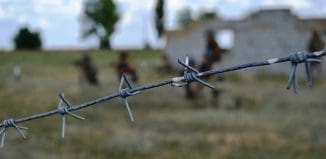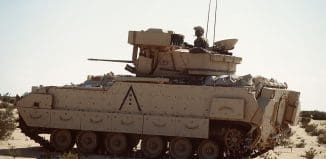A Bridge over the Mediterranean: The French-Egyptian Arms Deal
This post is also available in:  עברית (Hebrew)
עברית (Hebrew)

A recent arms deal between Egypt and France may indicate a change in the regional balance of power; Egypt’s traditional reliance on U.S. arms and assistance may be gradually shifting towards other actors such as France, the UAE, Kuwait and Saudi Arabia. Because Israel has a fundamental interest in Egyptian reliance upon the United States, a reduction in Egypt’s dependence on the United States is of great significance. Another ramification of Egypt’s current arms buying policy with implications for Israel is Egypt’s increased dependence on the Gulf States. At present, as the interests of Israel, Egypt and the Gulf State are aligned because of Iran and radical Islam, the authors do not anticipate damage to Israel’s security interests because of Egypt’s diminished dependence on the United States, but it is also important to remember that this trend is liable to give Egypt more room to maneuver and act against Israeli interests.
On February 17, 2015, during a visit by French Defense Minister Jean-Yves Le Drian to Cairo, France and Egypt signed a major arms deal involving the supply of 24 Rafale fighter jets, with advanced armament. An agreement was also made for the Egyptian acquisition of FREMM multipurpose frigates. The scope of the deal is estimated at €5.2 billion (approximately $5.9 billion). This is the second large deal between France and Egypt this year. Last June, it was reported that Egypt placed an order with French suppliers for four Gowind 2500 combat corvettes, a deal worth some €1 billion in and of itself.
Negotiations over the second deal were carried out at warp speed, beginning during a visit by Egyptian President Abdel Fattah el-Sisi to Paris in November 2014 and concluding at the beginning of February 2015. In addition, the weapons system will be supplied within an unusually short time. Since the Egyptians requested to operate the ships as soon as possible, France agreed to sell them the frigate Normandie, which was intended for the French navy in early 2015. The ship will sail for Egypt in July this year in honor of the opening of the new Suez Canal, planned for August 2015. Based on published reports, the planes will arrive in 2018. Though it is not unlikely that some of the fighter jets will be taken from the French Air Force order of battle. Further details regarding the planes’ weapons systems are unavailable, aside from stating that they are part of a separate contract.
As for the deal’s financing, it seems that at least half of the cost will be covered by the Gulf States – Saudi Arabia, the UAE and Kuwait – while the other half will be financed via commercial loans, while the guarantees are probably provided by the French government itself.
The Rafale: the Rafale is a twin-engine multipurpose combat aircraft manufactured by Dassault, currently in active service with the French Navy and the French Air Force. The most recently manufactured planes are equipped with Active Electronically Scanned Arrays (AESA) radars, as well as Infra-Red Search and Track (IRST) systems. The plane can carry a munitions payload of up to 9.5 tons. The weapons include a 30 mm. canon and various French-made missiles. Its biggest disadvantage is its inability to carry anything but French munitions, especially missiles already in the hands of the Egyptian air force for their F16 fleet.
The FREMM frigates (Frégate Européenne Multi-Mission): these frigates, the result of a joint French-Italian project, are quite large within their category, measuring 142 meters and having a displacement of 6,000 ton. (For the sake of comparison, the Israeli navy’s Sa’ar 5 have a 1,250 ton displacement.) They carry one helicopter, an OTO Melara 76 mm. Super Rapid gun, Exocet anti-ship missiles, SCALP-Navale cruise missiles, Aster-15 surface-to-air missiles, torpedoes and other anti-submarine equipment. Their maximum speed is 27 knots and their range is 6,000 nautical miles. So far, these ships have been acquired by the navies of France, Italy and Morocco.
The Gowind-2500 corvettes: these corvettes are designed for littoral missions. They are 102 m. long and have a displacement of 2,500 ton. So far, these ships have been ordered only by Egypt and Malaysia. The first ship intended for Egypt will be launched in 2017.
 Register to iHLS Israel Homeland Security
Register to iHLS Israel Homeland Security
Although there were protests in France against the sale – contending Egypt’s disregard for human rights and its aerial attacks on Libya – the sale is a positive development for the French government because despite their best efforts, the French have so far failed to export the Rafale. While the plane is the top choice for India, which is interested in 126 aircrafts, three years of negotiations between the sides have yet to yield a contract. Thus, the contract with Egypt provides France with another foothold in the Middle East and an opportunity to expand its arms market, with an eye to the UAE and Qatar as potential customers. It should be noted that both French President François Hollande and former French President Nicolas Sarkozy prioritized influence in the region, mainly by means of extensive security deals. The French naval and air force base in Abu Dhabi, in operation since 2009, is a reflection of that policy.
For Egypt, the arms deals’ significance is mainly political. Egypt has been a customer and ally of the United States since the Camp David Accords; it has received some $1.3 billion a year in military aid. In the last 30 years, almost every single Egyptian weapons system was purchased from the United States. However, upon eruption of the political upheavals in Egypt in the winter of 2011, and especially after the U.S. Administration called for President Hosni Mubarak’s resignation, Egypt’s trust in the United States as an ally has been undermined. Following the freezing of part of the U.S. aid package in response to the overthrowing of Muhammad Morsi’s government- the Muslim Brotherhood democratically elected president in July 2013, the Egyptian leadership has lost its faith in the United States. Consequently, the Egyptian leadership began searching for new weapons suppliers, the natural candidates being Russia and France. The Egyptian army still uses a large number of outdated Soviet weapons, including fighter planes, helicopters, tanks and air defense systems. It also has French supplies, albeit in smaller numbers, including the Mirage 2000 and the Milan anti-tank missile. Recent reports stated that there were talks between Egypt and Russia over arms deals in the $2-4 billion range that would include the S-300V aerial defense system (a deal that may yet be finalized).
Nonetheless, it does not seem that Egypt can or wishes to forfeit its relationship with the United States. Most of its military equipment is U.S.-supplied and Egypt still needs whatever aid it can get. Moreover, the recent deals with France indicate the Egyptian regime’s resolve to strengthen its armed forces despite the economic difficulties it is facing. At the end of the day, only the United States is capable of supplying Egypt with aid of the scope it has been receiving to date. It therefore seems that the deal with France as well as the extended talks with Russia about military aid is intended to convey a message to the United States according to which Egypt is not exclusively dependent on it.
The introduction of the Rafale fighter jets into the service of its air force will provide Egypt a more advanced plane compared to the F16C/D in its possession, but the number of jets – relatively few compared to some200 F16s in service– and the dependence on French armaments will limit the advantages of this deal. The introduction of the FREMM frigate and Gowind 2500 corvette into service (certainly not before 2020) will represent a significant upgrade for the Egyptian navy, currently operating FFG7 and Knox frigates, all from U.S. Navy drawdown. Still, the frigates and corvettes will not result in a dramatic improvement in the capabilities of the Egyptian armed forces.
Because Israel has a fundamental interest in Egypt remaining closely allied with the United States, a reduction in Egypt’s dependence on the United States is of great significance. Another ramification of Egypt’s current arms buying policy with implications for Israel is Egypt’s increased dependence on the Gulf States. El-Sisi’s regime owes much to Saudi Arabia, Kuwait and the UAE for their massive economic support, the only thing standing between the regime and its collapse. The Gulf’s financing of these weapons systems will certainly expand the Gulf States’ influence on Egypt. On the other hand, these nations need Egypt’s political and military position to promote their own regional interests, such as the struggle against radical Sunni Islam and Iran’s maneuvers designed to expand its influence on the region. At present, as the interests of Israel, Egypt and the Gulf State are aligned because of Iran and radical Islam, we do not anticipate damage to Israel’s security interests because of Egypt’s diminished dependence on the United States, but it is also important to remember that this trend is liable to give Egypt more room to maneuver and act against Israeli interests.
Yiftah Shapir, Yoel Guzansky





























